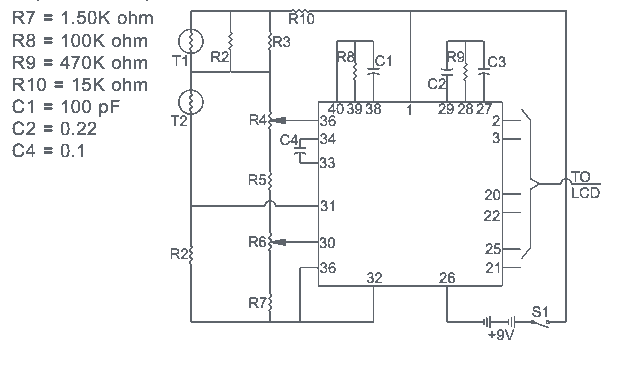
toggle switch using 555

The circuit functions as a toggle switch, exhibiting two stable states: ON and OFF. When the circuit is in the ON state, it remains in that state until the switch is pressed again. The project is based on a design from buildcircuit.com. In all MINIBREAD projects, the following schematic has been utilized. When a positive voltage is applied to the 1K resistor connected to the base of the transistor, the relay is activated.
The toggle switch circuit primarily consists of a transistor, a relay, a resistor, and a switch. The transistor acts as a control element, allowing for the switching of the relay. The resistor, typically valued at 1K ohms, is connected to the base of the transistor; it plays a crucial role in limiting the current flowing into the base, thus controlling the transistor's operation.
In the OFF state, the circuit does not conduct, and the relay remains deactivated. When the switch is pressed, a positive voltage is applied to the base of the transistor through the resistor. This voltage causes the transistor to enter saturation, allowing current to flow from the collector to the emitter, which energizes the relay coil. As a result, the relay switches to the ON position, closing its contacts and powering the connected load.
The toggle function is achieved through the inherent characteristics of the relay. Once energized, the relay maintains its state even after the switch is released, due to the mechanical latching mechanism of the relay. To turn the circuit OFF, the switch must be pressed again, which interrupts the base current and deactivates the relay.
This circuit can be utilized in various applications where a simple toggle switch is required, such as in home automation systems, lighting controls, or any device requiring a persistent ON/OFF state. The design is straightforward and can be integrated into a larger system with minimal additional components. Proper attention should be given to the relay specifications to ensure it can handle the load connected to it, as well as the power ratings of the transistor to prevent overheating during operation.The following circuit works as a toggle switch. The circuit has two stable states, ON and OFF. Once it is ON, it remains ON till you press the switch again. The project has been derived from buildcircuit. com. In all MINIBREAD projects, we have used the following schematic. When resistor 1K(connected to Base of transistor) gets positiv e voltage, the relay gets activated. 🔗 External reference
The toggle switch circuit primarily consists of a transistor, a relay, a resistor, and a switch. The transistor acts as a control element, allowing for the switching of the relay. The resistor, typically valued at 1K ohms, is connected to the base of the transistor; it plays a crucial role in limiting the current flowing into the base, thus controlling the transistor's operation.
In the OFF state, the circuit does not conduct, and the relay remains deactivated. When the switch is pressed, a positive voltage is applied to the base of the transistor through the resistor. This voltage causes the transistor to enter saturation, allowing current to flow from the collector to the emitter, which energizes the relay coil. As a result, the relay switches to the ON position, closing its contacts and powering the connected load.
The toggle function is achieved through the inherent characteristics of the relay. Once energized, the relay maintains its state even after the switch is released, due to the mechanical latching mechanism of the relay. To turn the circuit OFF, the switch must be pressed again, which interrupts the base current and deactivates the relay.
This circuit can be utilized in various applications where a simple toggle switch is required, such as in home automation systems, lighting controls, or any device requiring a persistent ON/OFF state. The design is straightforward and can be integrated into a larger system with minimal additional components. Proper attention should be given to the relay specifications to ensure it can handle the load connected to it, as well as the power ratings of the transistor to prevent overheating during operation.The following circuit works as a toggle switch. The circuit has two stable states, ON and OFF. Once it is ON, it remains ON till you press the switch again. The project has been derived from buildcircuit. com. In all MINIBREAD projects, we have used the following schematic. When resistor 1K(connected to Base of transistor) gets positiv e voltage, the relay gets activated. 🔗 External reference





